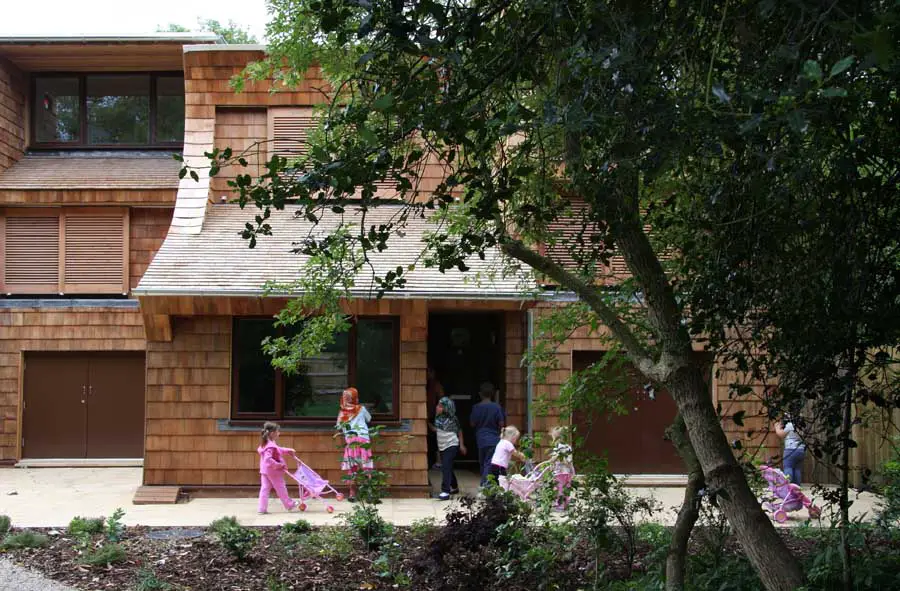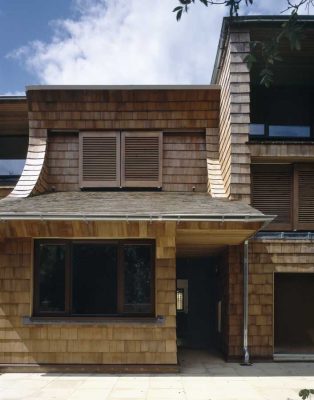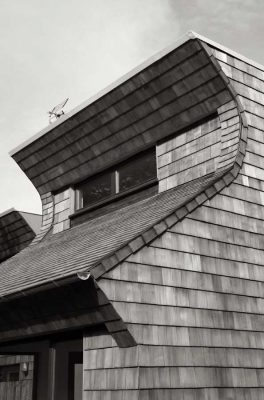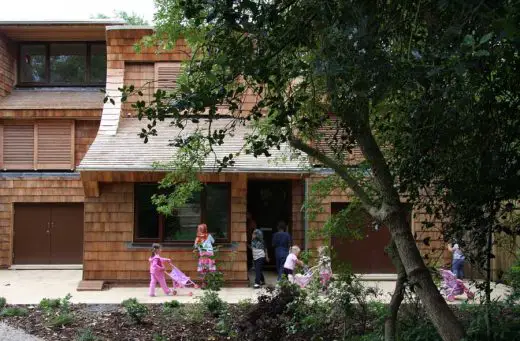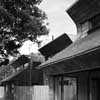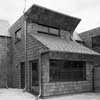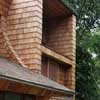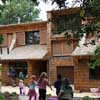Bateman Mews London, SW4 Family Housing, Clapham Park Property, Architecture, Building Photos, Architect
Bateman Mews Clapham Park Homes
Family Homes London: SW4 Housing design by Anne Thorne Architects Partnership, England
21 May 2010
Design by Anne Thorne Architects Partnership
Location: Bateman Mews, Clapham Park, South London, SW4, England, UK
Family Homes in London
Bateman Mews is the fruit of a successful relationship between client, design team, contractor and suppliers. Careful detailing and the employment of skilled shingle installers resulted in beautifully executed joints. The scheme proves that it is possible to design beautiful social housing on a tight budget and a tight London site.
Bateman Mews Building
Anne Thorne Architects Partnership was commissioned by Metropolitan Housing Trust to design 5 large family homes for social rent on the site of what used to be a neglected car park and hostel garden.
The seven-person 112 square metre houses were designed to Lifetime Homes and the project achieved Ecohomes ’Excellent’ standard. Bateman Mews has recently been awarded a Building for Life Silver Standard, and it was described by the assessors as a ‘highly distinctive and pleasing scheme on the type of site that often produces mediocre and unimaginative responses’.
Also featured by Will Anderson’s book ‘Homes for a changing climete’ as ‘ a striking development’.
Design Concept, Site Layout & Planning Constraints
The houses were designed in response to the tight and overlooked site with mature Sycamores, Willows, Ashes and a Chinese Privet. From concept stage, the design took advantage of the wooded quality of this pocket site to create a ‘huts in the garden’ feel, and to make the most of timber as a building and cladding material.
The positioning of the houses on the site reflects our intention to minimise tree loss and make the most of the sun as well as being aware of privacy issues. The traditional family house volume was therefore broken down, elongated and curved. The staggered L shape plan of each house was developed in response to concerns about overlooking. This allows the main bedrooms and living rooms to have a view towards a small courtyard, gaining light from clerestory windows on the north side.
The overall massing of the five houses was broken down into a visually simple and rhythmical composition. The curved overhangs meant no ‘added on’ elements, such as canopies. The simple structural nature of this lightweight construction meant saving on high embodied energy masonry, with well shaded and ventilated spaces. It also creates a feeling of openness towards the L shaped gardens and a strong vertical connection through the generous staircases attached to the small bedrooms and hall. The stair towers also aid natural ventilation and the quality of light.
Timetable & Programme
Anne Thorne Architects were appointed in February 2006, with a tight programme. Planning permission was obtained in the summer. The project went out to tender under a Design and Build contract in May 2007, and construction started on site in July. The building was occupied by the 8th June 2009.
Materials and Methods of Construction
Prefabricated softwood timber panels from a Forest Stewardship Council accredited supplier were used to speed the construction process, and to reduce site traffic and construction waste. The envelope, including the warm roof, is of ‘breathing wall’ construction with recycled cellulose (newspaper) insulation filling the space between the studs.
Externally the houses are mostly clad in Western Red Cedar shingles (approved by the Canadian Sustainable Forestry Certification Coalition) with high performance timber windows and external sliding wooden shutters. The majority of the roof coverings are sedum blanket and shingles.
The size and lightweight nature of the cedar shingles meant they were ideal for covering the curved shell, as well as the vertical walls and sloping roofs. The natural durability and longevity of shingles also enables them to extend to the ground, letting the shape continue uninterruptedly.
The green roofs and gardens will improve biodiversity and the ecological value of the site. A shared garden and playground to the south-east of the site is part of the overall development. Twenty three children have now moved to the development and are enjoying the garden.
Bateman Mews Property images / information from Anne Thorne Architects Partnership
Location: Bateman Mews, London, SW4, England, UK
London Buildings
Contemporary London Architecture
London Architecture Designs – chronological list
London Architecture Walking Tours by e-architect
London Housing
Blackwall Reach, Tower Hamlets, East London
Design: C. F. Møller Architects
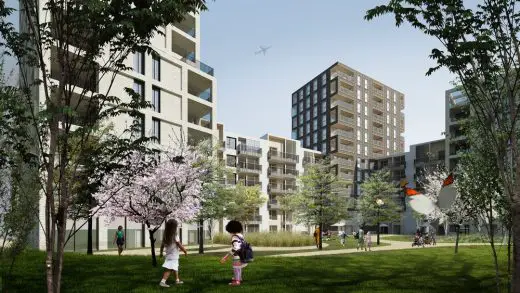
Court Yard View CGI
Blackwall Reach Development
Adelaide Wharf, Hackney, northeast London
Allford Hall Monaghan Morris
Adelaide Wharf housing : RIBA Award 2008
1 Hyde Park, Knightsbridge, west London
Richard Rogers Partnership
One Hyde Park
Donnybrook housing, east London
Peter Barber Architects
East London Housing
Comments / photos for the Bateman Mews England Architecture page welcome

